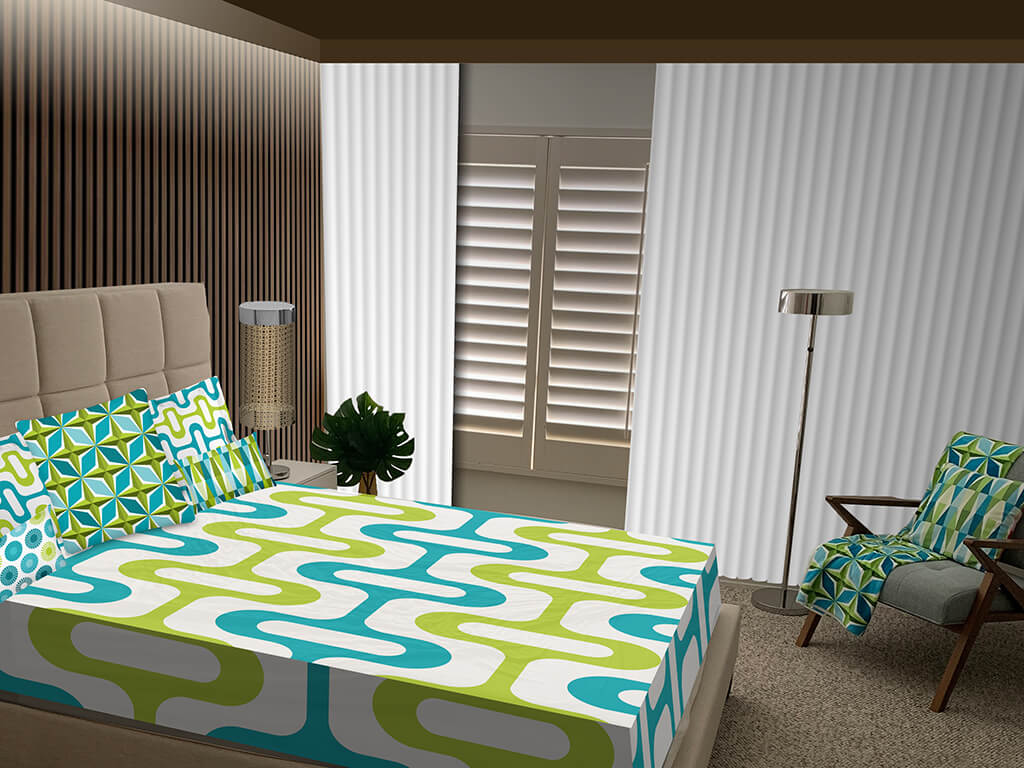
How to start an online store in 30 steps - Part one, before launch
Share
What does it take to start an online store you might ask? It’s a neverending complex process. That’s also part of the fun, to work on making it better day after day. Before it’s online though, there’s a slew of steps and challenges to go through before you can shout to the world “It's LIVE!”
I thought it might be interesting to share a list of the steps I went through. I added my own thoughts for each one. Hoping it can help others have a hint of what you're getting into.
Here we go...
Step by step in bold followed with my own experience and answers.
-
Brainstorm on ideas, products, styles, designs
-
Find a niche
Mid century modern
-
Gather thoughts and ideas
Revisit this timeless style in some way
-
Study market size and behaviour
Not mainstream at all but very enthusiastic with regular online searches
-
Analyse competition's online offering
Vintage, sputnik, retro, fade colours, a lot of the same, some cool stylish designs
-
Shop physical stores
Vintage and thrift stores, boutiques, any and every store… even Target now has a 1960s line of products called Project 62!
-
Establish a few concepts and contstraints
Mid century inspiration, colourful, exclusive designs, simplicity, big bold geometrical patterns, bright colours, no photos
-
Brainstorm basic design and marketing ideas
Revisit mid century modern in a new way, redesign some classics, special collections, no product restrictions
-
Brainstorm for a name
Don't be afraid to go different routes, make sure it's clear, easy to find and remember, and won't hurt marketing. If you have to spell it to somebody, it's wrong (I know it's a trend but it can get very tricky).
-
Select a name
Be careful not to select a name too quickly. Make sure it's universal and available on many platforms without having to tweak it too much: MidCentury.Shop might be an available domain for the store but "Mid Century Shop" might already be take on Facebook and Instagram. If it's multilingual, even better!
-
Buy the domain
I bought mine with NameCheap which offers an easy way to look up every extension possible (classic like .com .net or .store and new ones like .style .shopping .club). Don't forget to open related social media accounts, fill in all the accounts informations thoroughly with the right keywords.
-
Make a logo
I'm a graphic designer so that was fun and easy for me. And free!!
-
Start designing ONE product with multiple pattern variants
Square throw pillow with different colours and patterns
-
Apply the best ones on a short selection of products to see how it turns out
Cushion, mug, towel
-
Organize a focus group with friends of different backgrounds and tastes, show them your favourites AND worse ideas to spur debate
3 boards for discussions, while taking notes, without intervening
#1 Patterns: black/white basic designs and patterns
#2 Colours: a mix of designs and colours in different variants
#3 Real products and miscellaneous
Very important and useful step. One of the greatest part of this whole process!
-
Make adjustments
Some designs I didn’t think would catch the eye gathered the most comments
-
Establish a colour palette and variants selector
I decided to constraint myself to specific colours to make my designs and style recognizable and unique. I created a palette of 50 colours with numbers and names, grouped by harmony and later organized them in a specific order of 7 variants for the online store so it's always the same when shopping: orange, yellow, pink, purple, blue, aqua, green, multicolour
-
Design the final products
That takes a lonnnnnnnnng time!
-
Choose a supply system
Dropshipping (supplier takes care of production, packaging and shipping directly to your customers). No inventory.
-
Find, analyse, compare suppliers and online platforms. Don't stick with one too soon or hold on too many for too long
Gooten, ArtOfWhere, Printify, Society6, Etsy, Zazzle, and tons of others… I chose Printful for the overall quality of products and the great mockup generator. I opted to concentrate on them only for the first few months while learning how everything works.
-
Study and choose a platform for building your shop
WooCommerce, BigCommerce, Volusion, Wix, BigCartel and many others. Make sure you don't overlook features that might be useful eventually (like a blog module, which I didn't think I'd be using and I'm writing this article with! I got lucky on this one...). I chose Shopify for the reputation, features and ease-of-use.
-
Trial and error
Try your hand at the platform and its features. Start small, grow slowly. Get to know all the twists and technical particularities. Make a list of questions. When in trouble, put it aside for later and move on to the next challenge. Get help. Use e-v-e-r-y-t-h-i-n-g available: help pages, faqs, blogs, community forums, support calls and emails, videos, YouTube, webinars, etc. I even wrote to other store owners to know how they dealt with something specific. Most answered gracefully with useful info.
-
Be patient
Read. Learn. Try. Try again. Learn more. Be patient. Repeat. Repeat again. And again. Did I say be patient? I still read, learn and work on the store 1-2 hours every morning before my regular workday.
-
Build a beta version of the store
Work. Work. Work. Correct mistakes. Don't be afraid to start over when you find a better way or a better template. Learn to code a little bit (I already knew the basics from my work). Take your time. ALWAYS make it right, the smoothness of the shop might depend on it later.
-
Calculate and adjust prices
Don't forget fees, marketing, advertising, samples costs... and profit! Make a plan of yearly promotions, holidays, rebates.
-
What about shipping?
Try to learn shipping
Try to learn shipping
Try to learn shipping
Ahhhhh….. forget it. Printful will take care of it for now. (hint: There's a feature called "Live rates" with Printful making shipping cheaper for customers but it's only available for more expensive Shopify Premium accounts, but... if you pay for the whole year in advance, like me, they will activate them for you! Just ask for it.)
-
Organize a 2nd focus group for the online beta version, again with people of different tastes and shopping habits
I gave 5 people from very different backgrounds the task to beta-test the 1st version of the store and review it over a weekend. They all came back with great comments and suggestions but to my surprise, all five looked at it from a different angle. Here's a recap of what grabbed their attention the most:
#1 - Movie director: look & feel, tone of speech, grammar
#2 - Relationships therapist: buying experience, shopping cart process, product selection, towel, bag
#3 - Marketing director: collections organization, descriptions, errors, mistakes, omissions, style, size charts
#4 - My retired sister: excitement, colours, favourites, leggings
#5 - Shopping enthusiast friend: product/colour mix, selection, price, missing offers, range of products, mugs
-
Make adjustments
Postpone anything that's not critical for launch.
-
Launch the store
And drop dead for a few days...
- Enjoy!
Relax
After a good rest, you should be happy and celebrate. Are we done?? NOOOoooooo.......
That was only part 1! The store might be online but you can't just leave it there and wait for customers to come in and spend. It won't happen. It doesn't work that way. We’re just starting!
Next
So what else? A TON of stuff to learn... Here's what's left to consider (in a Part II article or separately):
- Google Analytics
-
Google AdWords
CPC, CTR, Impressions, Bids, Audiences, Keywords, ... - Google Webmaster Tools & Search Console
- Google Merchant Center
- Google My Business page
- Facebook Business and Ads
- Instagram for Business, tagging & network building
- Currency converter
- SEO (Search Engine Optimization)
- ALT texts
- Product titles
- SKUs (Single Keeping Unit)
- Product Reviews
- Discounts
- Bank accounts & currencies
- Taxes
- Newsletter
- Refunds
- Policies
- And many, many more...







1 comment
Hi! Great blog & absolutely beautiful website and designs! I have some questions about shipping using Printful’s advanced plan, as you wrote about … I would love to talk to you and pick your brain if possible on this? Could you please e-mail me? I highly appreciate it!!